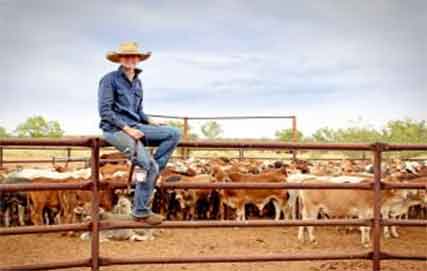
The project is one of several DPIRD Northern Beef Development initiatives, including a new genetics and breeding project, the pastoral agriculture project, as well as other Meat and Livestock Australia supported projects.
The second year of a research trial evaluating the effectiveness of pain relief treatments to improve animal welfare across the northern cattle industry is underway in WA’s north.
The Department of Primary Industries and Regional Development (DPIRD) provided an update on the trial at a recent Twilight Forum it hosted in the Pilbara recently.
The trial is part of a project collaboration between DPIRD and the Northern Territory Government’s Department of Industry, Tourism and Trade, with co-investment from Meat and Livestock Australia (MLA).
DPIRD’s Northern Beef Development team is leading the trial, which is comparing the practical application of pain relief products to identify the most appropriate strategy and recommended industry best practice.
The department has joined with two Producer Demonstration Sites in the Kimberley and one in the Pilbara to evaluate the products across 800 Bos indicus and Bos indicus cross weaners.
Development officer Sarah Gwynne said the second year of the trial was replicating the first to verify the preliminary findings, with initial trial data highlighting the important role pain relief plays in best practice animal welfare standards.
“The preliminary trial results indicate the use of commercially available pain relief products is effective in improving animal welfare outcomes, supporting producers’ endeavours to satisfy consumer expectations,” she said
“Producers’ feedback has been that animals seem more settled after a pain relief product has been applied.
“Initial data shows movements like head scratching and self-grooming were reduced in animals administered with one or more pain relief treatments, while positive behaviours, such as ruminating and feeding, were heightened in these animals alike.”
Accelerometers – small devices fitted to eartags – are being used to capture the standing and sitting behaviour of the animals, while GPS devices are recording where an animal has traversed.
“These devises, along with the use of GoPro cameras, will help to confirm anecdotal evidence that animals feed soon after being processed, which suggests they were comfortable enough to eat,” Ms Gwynne said.
Two trial methods were evaluated in the first year of the project to compare the stress of weaning events with that of weaner animal processing, including branding, tagging, vaccinating, dehorning and castrating.
The 21-day model, representing typical station practises, involved fitting the devices and recording liveweights alongside weaner processing.
The trial animals were then turned out into their allocated paddock before returning to the yards three weeks later, where the accelerometer and GPS collar technology was removed and final assessments recorded.
The 35-day model captured baseline live weights when fitting the accelerometers before turning out stock onto paddocks for two weeks.
The weaners were then re-yarded for processing and new devices fitted before returning to the paddock. Three weeks later the animals were brought back to the yards for final assessment and removal of devices.
“When all the data is collected and analysed, this project will provide a valuable insight into of the practical application using pain relief products to improve animal welfare outcomes in the northern cattle industry,” Ms Gwynne said.
“This project will provide producers with confidence of how best to integrate pain relief into routine animal husbandry practices.”
MLA Productivity and Animal Wellbeing group manger David Beatty said more research investment was required to build on this project to reduce, refine and replace pain management procedures.
“These research trials will reinforce current best practice use of pain relief and also allow us to better understand where new research may be required to further advance effective analgesia for painful procedures,” Dr Beatty said.
The project is one of several DPIRD Northern Beef Development initiatives, including a new genetics and breeding project, the pastoral agriculture project, as well as other Meat and Livestock Australia supported projects.
Another DPIRD-MLA collaboration includes phosphorus supplementation research and the Northern Beef Business (NB2) business training and mentoring program.
For more information click here.
-DPIRD
